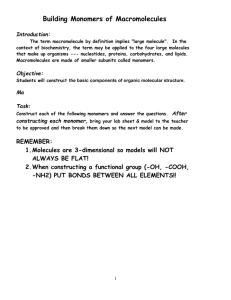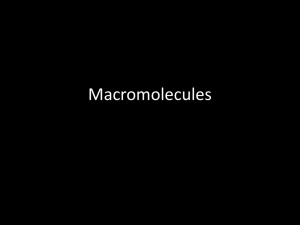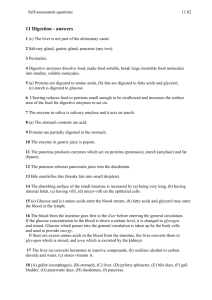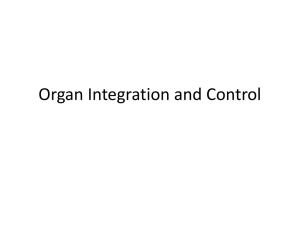#15 reads: Explain how each nutrient is absorbed into the organism
advertisement
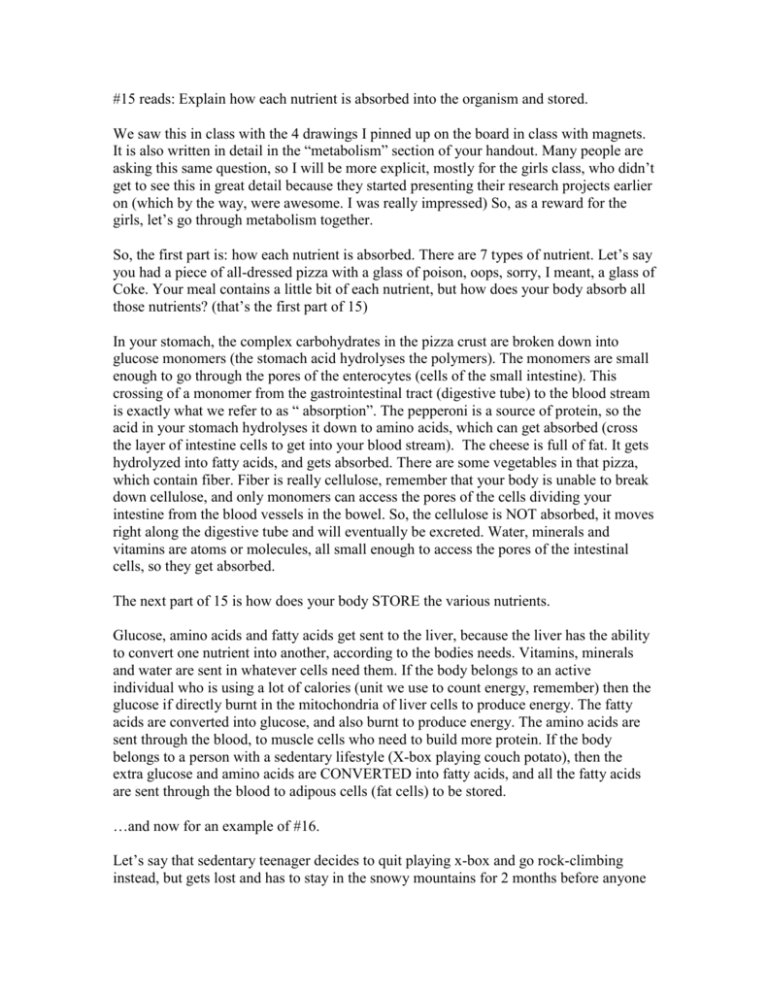
#15 reads: Explain how each nutrient is absorbed into the organism and stored. We saw this in class with the 4 drawings I pinned up on the board in class with magnets. It is also written in detail in the “metabolism” section of your handout. Many people are asking this same question, so I will be more explicit, mostly for the girls class, who didn’t get to see this in great detail because they started presenting their research projects earlier on (which by the way, were awesome. I was really impressed) So, as a reward for the girls, let’s go through metabolism together. So, the first part is: how each nutrient is absorbed. There are 7 types of nutrient. Let’s say you had a piece of all-dressed pizza with a glass of poison, oops, sorry, I meant, a glass of Coke. Your meal contains a little bit of each nutrient, but how does your body absorb all those nutrients? (that’s the first part of 15) In your stomach, the complex carbohydrates in the pizza crust are broken down into glucose monomers (the stomach acid hydrolyses the polymers). The monomers are small enough to go through the pores of the enterocytes (cells of the small intestine). This crossing of a monomer from the gastrointestinal tract (digestive tube) to the blood stream is exactly what we refer to as “ absorption”. The pepperoni is a source of protein, so the acid in your stomach hydrolyses it down to amino acids, which can get absorbed (cross the layer of intestine cells to get into your blood stream). The cheese is full of fat. It gets hydrolyzed into fatty acids, and gets absorbed. There are some vegetables in that pizza, which contain fiber. Fiber is really cellulose, remember that your body is unable to break down cellulose, and only monomers can access the pores of the cells dividing your intestine from the blood vessels in the bowel. So, the cellulose is NOT absorbed, it moves right along the digestive tube and will eventually be excreted. Water, minerals and vitamins are atoms or molecules, all small enough to access the pores of the intestinal cells, so they get absorbed. The next part of 15 is how does your body STORE the various nutrients. Glucose, amino acids and fatty acids get sent to the liver, because the liver has the ability to convert one nutrient into another, according to the bodies needs. Vitamins, minerals and water are sent in whatever cells need them. If the body belongs to an active individual who is using a lot of calories (unit we use to count energy, remember) then the glucose if directly burnt in the mitochondria of liver cells to produce energy. The fatty acids are converted into glucose, and also burnt to produce energy. The amino acids are sent through the blood, to muscle cells who need to build more protein. If the body belongs to a person with a sedentary lifestyle (X-box playing couch potato), then the extra glucose and amino acids are CONVERTED into fatty acids, and all the fatty acids are sent through the blood to adipous cells (fat cells) to be stored. …and now for an example of #16. Let’s say that sedentary teenager decides to quit playing x-box and go rock-climbing instead, but gets lost and has to stay in the snowy mountains for 2 months before anyone finds him or her. The body first does glyco-lysis…cutting of glucose stocks in the liver, in the form of glycogen). Then, once the liver glycogen reserves are gone, (after a few hours) the muscle glycolysis kicks in (still a few hours). Once all the glucose is burned, but the body still needs to stay warm, lipo-lysis, cutting of lipid begins. During lipolysis, triglycerides are chopped down into fatty acids, which can now cross the membranes of the adipous cells, and make their was to the liver through the blood stream. In the liver, the fatty acids are converted to glucose, which the mitochondria burn to produce the required energy. One the lipid reserves are gone, which can take a number of days, depending on how fat the person is, the body begins proteo-lysis. Cutting of proteins. So, the proteins are hydrolyzed into amino acids, which are sent to the liver, converted into glucose, and burned by the mitochondria to produce energy. The body burns fibrous proteins first (muscle, collagen) because those types of proteins are less essential (critical) than the globular proteins (hormones, enzymes, antibodies) for the body to survive. Eventually, everything will be burnt, and the rock-climber dies, unless he or she is rescued and fed. Ok, let me read this over to see if I’ve missed anything. Ok, it’s satisfacotry
